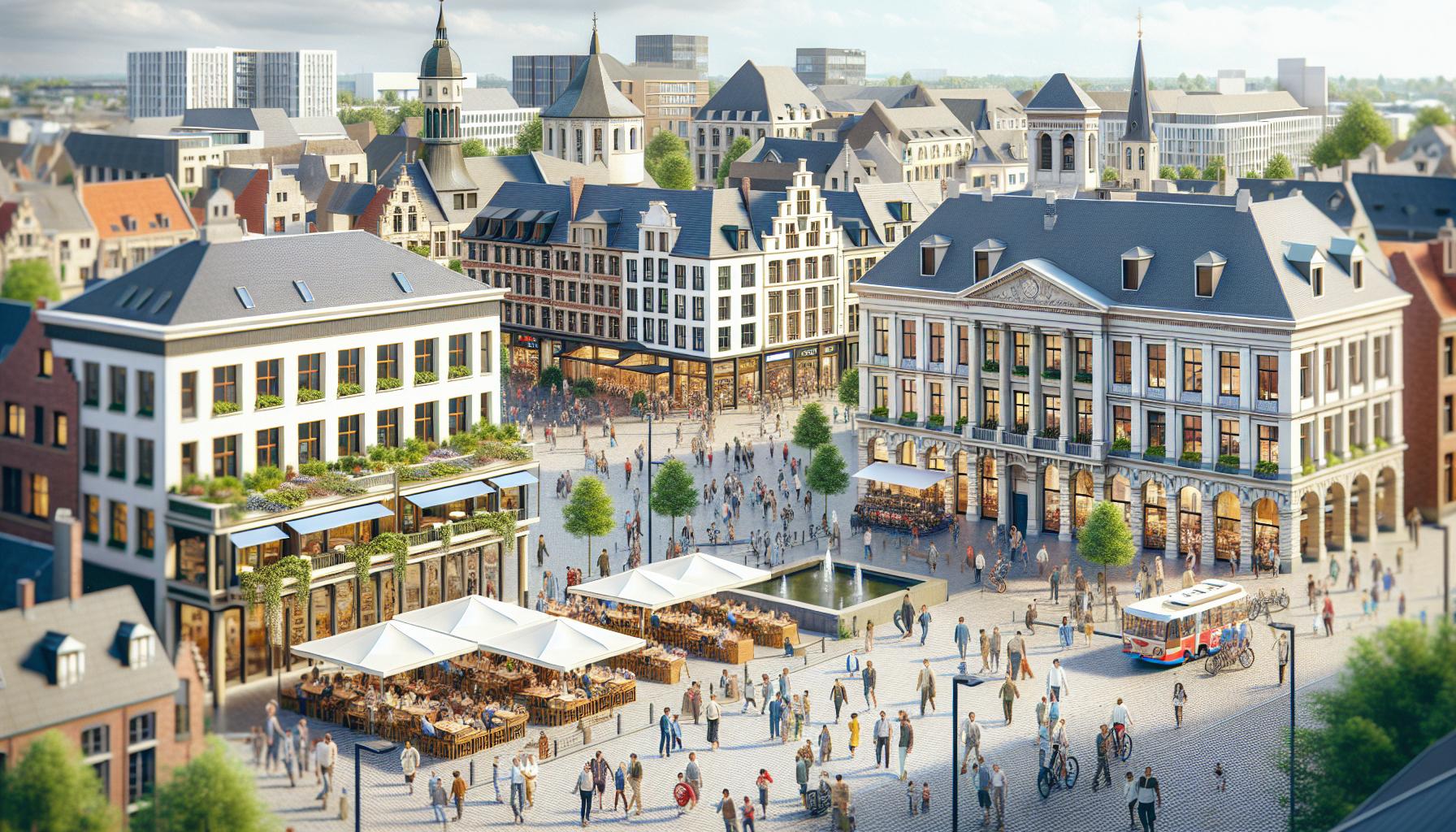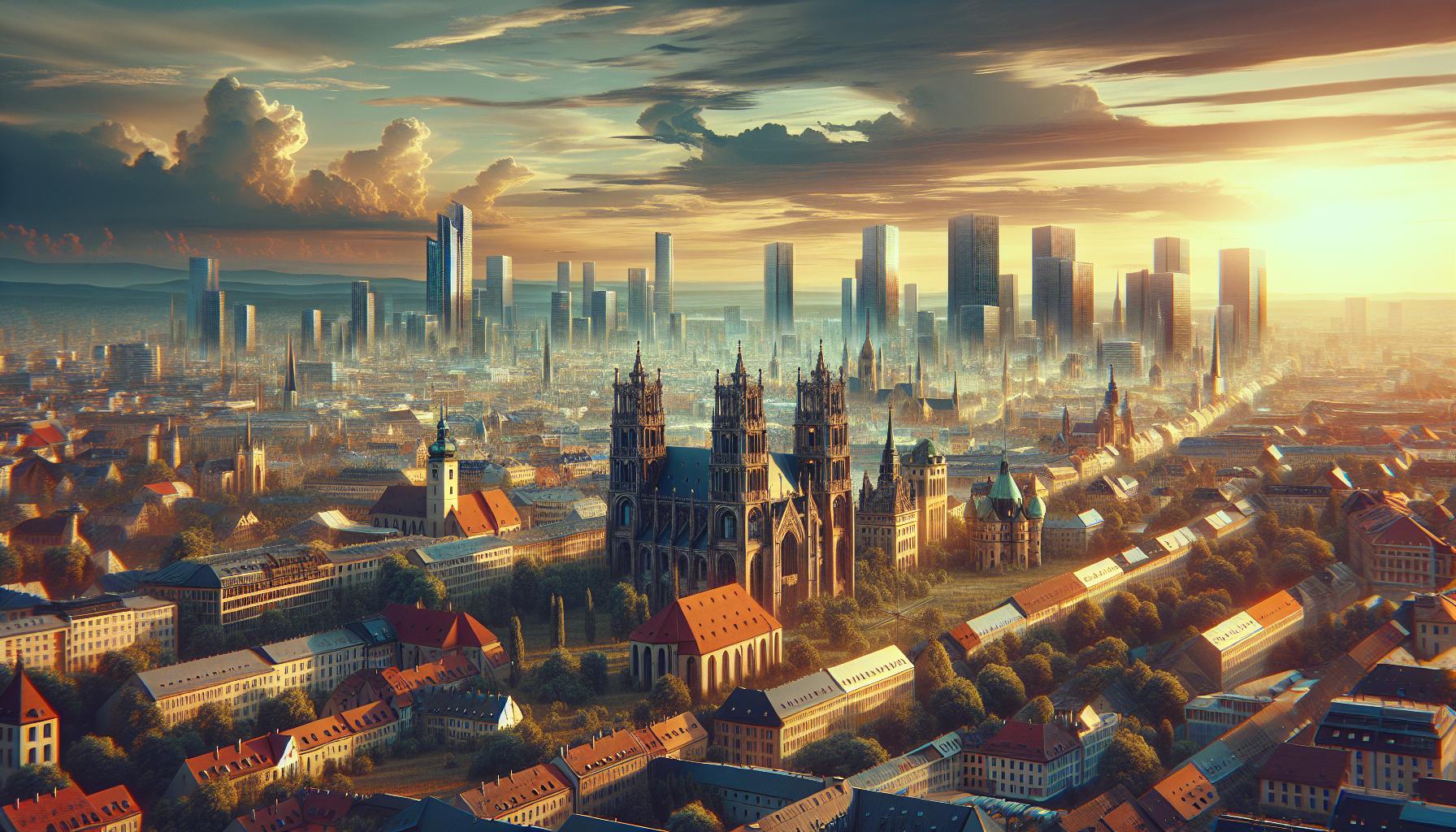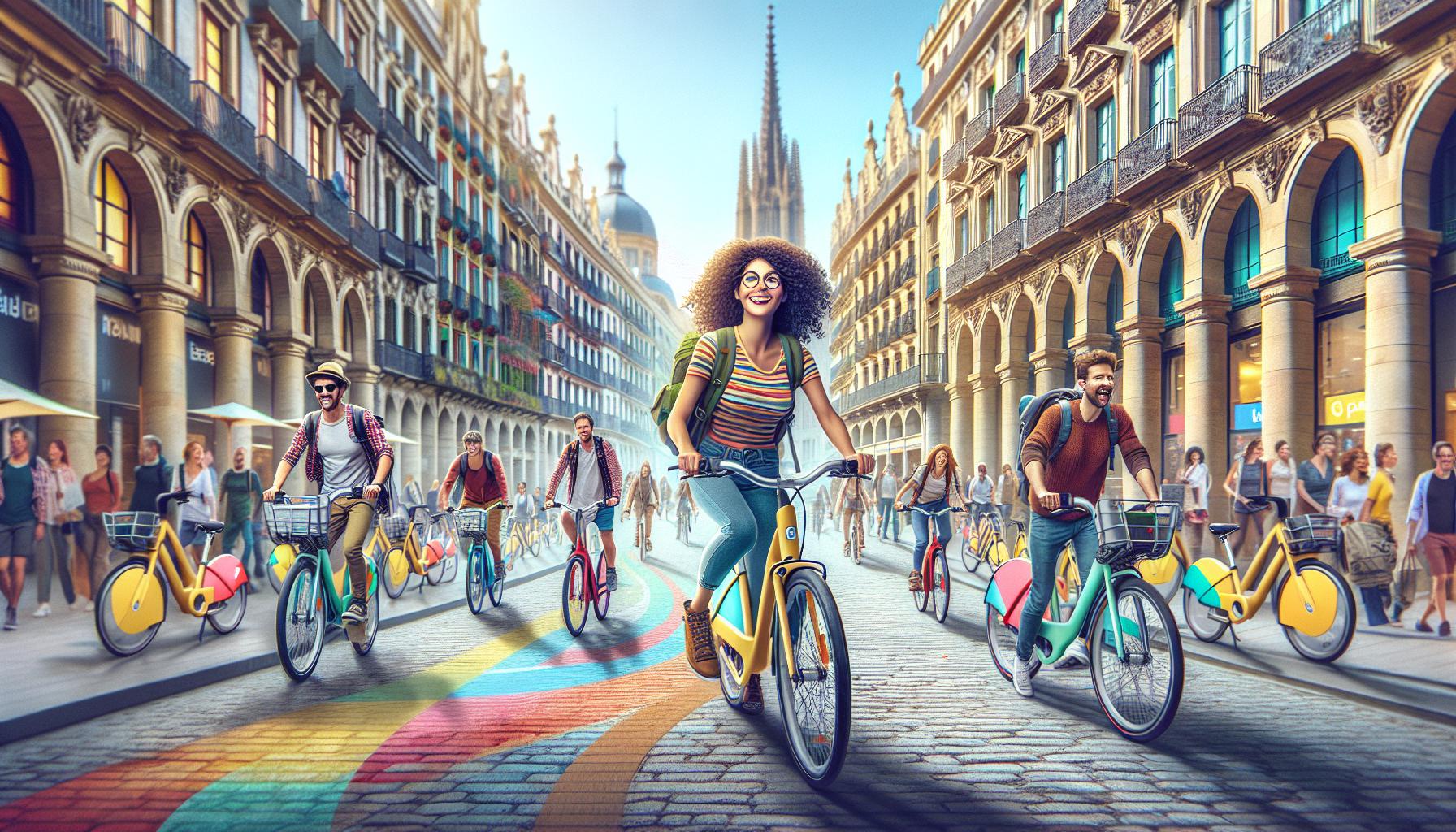Europe’s cities are a tapestry of history, culture, and modernity. From the romantic streets of Paris to the ancient ruins of Rome, each urban center offers a unique experience that captivates visitors from around the world.
As I’ve explored these diverse metropolises, I’ve discovered that city:dtaxl_g_vpa= europe are more than just tourist destinations. They’re living, breathing entities with their own personalities and stories to tell. Whether you’re wandering through the medieval lanes of Prague or admiring the cutting-edge architecture in Barcelona, there’s always something new to uncover.
In this article, I’ll take you on a journey through some of Europe’s most iconic cities, sharing insights and tips to help you make the most of your urban adventures. Get ready to discover the hidden gems and must-see attractions that make European cities truly unforgettable.
Key Takeaways
- City:dtaxl_g_vpa= Europe is a unique identifier used for categorizing and studying European cities, enabling efficient data organization and urban analysis
- European cities blend historical landmarks with modern marvels, offering diverse attractions from medieval castles to cutting-edge museums
- Public transportation in City:dtaxl_g_vpa= Europe is comprehensive, with integrated metro, bus, and tram systems, complemented by pedestrian-friendly infrastructure
- Accommodation options range from luxury hotels in historic buildings to budget-friendly hostels and apartments, catering to various preferences and budgets
- The culinary scene in City:dtaxl_g_vpa= Europe features local specialties and fine dining establishments, reflecting rich cultural heritage and innovative gastronomy
City:dtaxl_g_vpa= Europe
City:dtaxl_g_vpa= Europe is a unique identifier used in urban planning and data analysis to categorize and study European cities. This alphanumeric code serves as a standardized reference for urban researchers, policymakers, and data scientists working with European urban datasets.
The code consists of several components:
- “City:” prefix indicates an urban area classification
- “dtaxl” represents the data taxonomy level
- “g” denotes geographical context
- “vpa” stands for various performance attributes
- “Europe” specifies the continental scope
This classification system enables:
- Efficient data organization for European cities
- Simplified cross-city comparisons
- Streamlined urban policy development
- Enhanced collaboration among urban researchers
Researchers use City:dtaxl_g_vpa= Europe to:
- Analyze urban growth patterns
- Study demographic trends
- Assess economic performance
- Evaluate sustainability initiatives
- Compare transportation systems
City planners benefit from this classification by:
- Identifying best practices across European cities
- Developing targeted urban improvement strategies
- Facilitating knowledge exchange between municipalities
The City:dtaxl_g_vpa= Europe system covers a wide range of urban areas, including:
- Major capitals like London, Paris, and Berlin
- Mid-sized regional hubs such as Lyon, Munich, and Milan
- Smaller yet significant cities like Bruges, Uppsala, and Dubrovnik
By utilizing this standardized classification, I’m able to provide more accurate and comparable insights into Europe’s diverse urban landscape. This system forms the backbone of my analysis, allowing for a comprehensive exploration of the continent’s cities and their unique characteristics.
Key Features of City:dtaxl_g_vpa= Europe

Cities classified under City:dtaxl_g_vpa= Europe showcase distinctive characteristics that set them apart in the European urban landscape. These features contribute to their unique identities and play a crucial role in shaping their development and appeal.
Urban Planning and Architecture
City:dtaxl_g_vpa= Europe cities exemplify innovative urban planning and architectural excellence. Their layouts often blend historical elements with modern design, creating visually stunning and functional urban spaces. Key architectural features include:
- Preservation of historic city centers
- Integration of green spaces and parks
- Efficient public transportation networks
- Sustainable building practices
- Mixed-use developments combining residential, commercial, and recreational areas
These cities prioritize pedestrian-friendly zones, promoting walkability and reducing car dependency. Many have implemented smart city technologies, enhancing urban services and improving residents’ quality of life.
Cultural Significance
Cities in the City:dtaxl_g_vpa= Europe category boast rich cultural heritage and vibrant contemporary scenes. Their cultural significance is evident in various aspects:
- World-renowned museums and art galleries
- Historic landmarks and UNESCO World Heritage sites
- Thriving performing arts venues
- Diverse culinary traditions
- Multicultural neighborhoods reflecting global influences
These urban centers host international festivals, cultural events, and exhibitions, attracting visitors from around the world. They serve as hubs for creativity and innovation, fostering artistic expression and cultural exchange.
The cultural significance of City:dtaxl_g_vpa= Europe cities extends beyond their borders, influencing global trends in art, fashion, and design. Their unique blend of tradition and modernity creates dynamic environments that continue to shape European culture and identity.
Top Attractions in City:dtaxl_g_vpa= Europe

City:dtaxl_g_vpa= Europe boasts an array of captivating attractions that blend historical significance with modern marvels. These urban centers offer visitors a diverse range of experiences, from ancient landmarks to cutting-edge architectural wonders.
Historical Landmarks
The historical landmarks in City:dtaxl_g_vpa= Europe are testaments to the region’s rich past. These sites include:
- Medieval castles: Towering fortresses that once protected cities from invaders
- Gothic cathedrals: Awe-inspiring structures with intricate stone carvings and stained glass windows
- Roman ruins: Well-preserved remnants of ancient civilization, including amphitheaters and aqueducts
- Renaissance palaces: Opulent residences showcasing the wealth and power of former European rulers
- Historic town squares: Central gathering places surrounded by centuries-old buildings and monuments
Many of these landmarks offer guided tours, providing visitors with in-depth knowledge about their historical significance and architectural features. I recommend booking tours in advance to secure your spot and avoid long queues.
Modern Marvels
City:dtaxl_g_vpa= Europe isn’t just about the past; it’s also home to numerous modern attractions that showcase innovation and creativity:
- Iconic skyscrapers: Towering glass and steel structures that define city skylines
- Contemporary art museums: Cutting-edge galleries featuring works by world-renowned artists
- High-tech transportation hubs: Sleek train stations and airports that serve as architectural marvels
- Sustainable urban developments: Eco-friendly neighborhoods showcasing green building technologies
- Interactive science centers: Hands-on exhibits exploring the latest advancements in technology and research
These modern marvels often incorporate elements of the city’s history, creating a unique blend of old and new. For example, many contemporary buildings feature design elements inspired by traditional architectural styles, paying homage to the city’s heritage while pushing boundaries in urban design.
Getting Around City:dtaxl_g_vpa= Europe

Navigating City:dtaxl_g_vpa= Europe is a breeze with its well-developed transportation infrastructure and pedestrian-friendly layout. I’ll explore the efficient public transit systems and enjoyable walking and biking options that make exploring these urban centers a delight.
Public Transportation Options
City:dtaxl_g_vpa= Europe boasts comprehensive public transportation networks that seamlessly connect various parts of the city. These systems typically include:
- Metro/Subway: Extensive underground networks with frequent trains and clearly marked routes
- Buses: Comprehensive bus systems covering areas not served by metro lines
- Trams: Modern streetcar networks in many cities, offering scenic routes through historic districts
- Commuter Trains: Regional rail services connecting city centers with suburban areas
- Water Taxis: In coastal or riverfront cities, boat services provide unique transportation experiences
Public transit in these cities is known for its:
- Integrated ticketing systems allowing easy transfers between different modes
- Real-time digital displays at stations and stops showing arrival times
- Mobile apps for route planning and ticket purchases
- Accessibility features for passengers with mobility challenges
- 24-hour services on key routes, especially on weekends
For visitors, multi-day transit passes offer cost-effective and convenient options for exploring the city.
Walking and Biking Tours
City:dtaxl_g_vpa= Europe prioritizes pedestrian and cyclist-friendly infrastructure, making walking and biking tours excellent ways to explore. Key features include:
Walking Tours:
- Free guided walks led by knowledgeable local guides
- Self-guided audio tours available through smartphone apps
- Themed routes focusing on history, architecture, or culinary experiences
- Pedestrianized zones in city centers, creating safe and pleasant walking environments
- Well-maintained sidewalks and clear signage for easy navigation
Biking Tours:
- Extensive networks of dedicated bike lanes and paths
- Bike-sharing programs with convenient pickup and drop-off locations
- Guided bicycle tours covering major attractions and hidden gems
- Bike rental shops offering a variety of bicycles, including e-bikes for easier riding
- Cyclist-friendly traffic signals and bike parking facilities throughout the city
Both walking and biking tours offer unique advantages:
- Flexibility to stop and explore at your own pace
- Opportunities to discover off-the-beaten-path neighborhoods and local hangouts
- Eco-friendly ways to experience the city’s atmosphere and daily life
- Health benefits from active exploration
- Cost-effective alternatives to motorized transportation
Many City:dtaxl_g_vpa= Europe locations also feature specialized tours, such as night walks highlighting illuminated landmarks or food-focused bike rides exploring local markets and eateries.
Where to Stay in City:dtaxl_g_vpa= Europe
Finding the perfect accommodation in City:dtaxl_g_vpa= Europe ensures a comfortable and memorable stay. These cities offer a diverse range of options to suit various preferences and budgets, from luxurious hotels to budget-friendly alternatives.
Luxury Accommodations
City:dtaxl_g_vpa= Europe boasts an array of high-end hotels and resorts for those seeking premium experiences. These luxury accommodations often feature:
- Historic properties: Renovated palaces, castles, and mansions converted into 5-star hotels
- Panoramic views: Rooftop terraces and suites overlooking iconic landmarks
- World-class amenities: Spa facilities, Michelin-starred restaurants, and concierge services
- Designer interiors: Rooms and suites decorated by renowned architects and interior designers
- Central locations: Prime spots near major attractions and shopping districts
Top luxury hotels in these cities include the Ritz, Four Seasons, and Mandarin Oriental chains, as well as unique boutique properties that reflect local culture and history.
Budget-Friendly Options
For travelers on a tighter budget, City:dtaxl_g_vpa= Europe offers numerous affordable accommodation options:
- Hostels: Modern, clean facilities with shared dormitories and private rooms
- Budget hotels: No-frills accommodations offering basic amenities and comfortable stays
- Aparthotels: Self-catering units combining hotel services with apartment-style living
- Guesthouses: Family-run establishments providing a more personal touch
- Short-term rentals: Airbnb and similar platforms offering local apartments and rooms
These budget-friendly options often provide excellent value, located in vibrant neighborhoods with easy access to public transportation and local attractions. Many also offer free Wi-Fi, communal kitchens, and social spaces for meeting fellow travelers.
Culinary Experiences in City:dtaxl_g_vpa= Europe
The culinary scene in City:dtaxl_g_vpa= Europe is a gastronomic adventure, blending traditional flavors with innovative techniques. From local specialties to world-class fine dining establishments, these cities offer a diverse range of culinary experiences that cater to every palate and budget.
Local Specialties
City:dtaxl_g_vpa= Europe boasts an array of local specialties that reflect the region’s rich culinary heritage. Each city has its own unique dishes that have been perfected over generations:
- Street food markets: Vibrant hubs offering quick, authentic bites
- Artisanal bakeries: Freshly baked breads, pastries, and regional sweets
- Traditional cafes: Serving time-honored recipes and local favorites
- Food festivals: Seasonal events celebrating regional ingredients and cooking styles
- Specialty food shops: Showcasing local produce, cheeses, cured meats, and wines
I’ve found that exploring these local specialties provides insight into the city’s culture and history. Many restaurants and food tours offer tastings of traditional dishes, allowing visitors to sample a variety of flavors in one sitting.
Fine Dining Establishments
City:dtaxl_g_vpa= Europe is home to numerous fine dining establishments, many of which have earned prestigious Michelin stars:
| Restaurant Type | Features |
|---|---|
| Michelin-starred | Innovative tasting menus, expert wine pairings, impeccable service |
| Celebrity chef-owned | Signature dishes, exclusive atmospheres, cutting-edge culinary techniques |
| Historic venues | Elegant dining rooms in centuries-old buildings, classic recipes with modern twists |
| Rooftop restaurants | Panoramic city views, fusion cuisines, sophisticated cocktail bars |
| Concept restaurants | Immersive dining experiences, themed decor, interactive elements |
These fine dining establishments often require reservations weeks or months in advance. Many offer lunch menus at more accessible price points, allowing budget-conscious travelers to experience high-end cuisine without breaking the bank.
In City:dtaxl_g_vpa= Europe, the culinary scene is constantly evolving, with new restaurants and food concepts emerging regularly. From farm-to-table eateries focusing on sustainability to experimental pop-up dining experiences, these cities continue to push the boundaries of gastronomy while honoring their culinary traditions.
Best Time to Visit City:dtaxl_g_vpa= Europe
The optimal time to visit City:dtaxl_g_vpa= Europe depends on your preferences and the specific experiences you’re seeking. Here’s a breakdown of the seasons and what you can expect:
Spring (March to May):
- Mild temperatures ranging from 50°F to 65°F (10°C to 18°C)
- Blooming flowers and lush green parks
- Fewer crowds compared to summer
- Easter celebrations and spring festivals
Summer (June to August):
- Warm temperatures averaging 70°F to 85°F (21°C to 29°C)
- Long daylight hours for sightseeing
- Bustling outdoor cafes and beer gardens
- Numerous music festivals and cultural events
Fall (September to November):
- Crisp temperatures between 45°F and 60°F (7°C to 16°C)
- Beautiful autumn foliage in parks and surrounding areas
- Harvest festivals and wine-tasting events
- Reduced tourist crowds and lower accommodation prices
Winter (December to February):
- Cold temperatures ranging from 30°F to 45°F (-1°C to 7°C)
- Enchanting Christmas markets and New Year’s celebrations
- Potential for snow in some cities
- Indoor cultural activities like museums and concerts
For the best balance of pleasant weather and manageable crowds, I recommend visiting during the shoulder seasons of late spring (May) or early fall (September). These months offer comfortable temperatures for exploring the city on foot and participating in outdoor activities. You’ll also encounter fewer tourists compared to the peak summer months, allowing for a more authentic experience of local life.
If you’re interested in specific events or festivals, it’s worth planning your trip around these dates. For example:
- Carnival celebrations in February or March
- Classical music festivals in summer
- Oktoberfest in Munich during September and October
- Christmas markets from late November through December
Remember that weather patterns can vary slightly depending on the specific location within Europe, so it’s always a good idea to check local forecasts before your trip. Additionally, booking accommodations and popular attractions in advance is recommended, especially if you’re visiting during peak seasons or major events.
Europe’s Captivating Cities
I’ve taken you on a whirlwind tour of Europe’s captivating cities, from their rich history to modern marvels. These urban centers offer endless discoveries, blending tradition with innovation. Whether you’re exploring ancient landmarks, indulging in culinary delights, or navigating efficient public transport, City:dtaxl_g_vpa= Europe has something for everyone.
Remember to plan your visit during the ideal season and book accommodations that suit your style and budget. With this guide, you’re now equipped to embark on an unforgettable European adventure. Get ready to create lasting memories in these vibrant urban landscapes!

